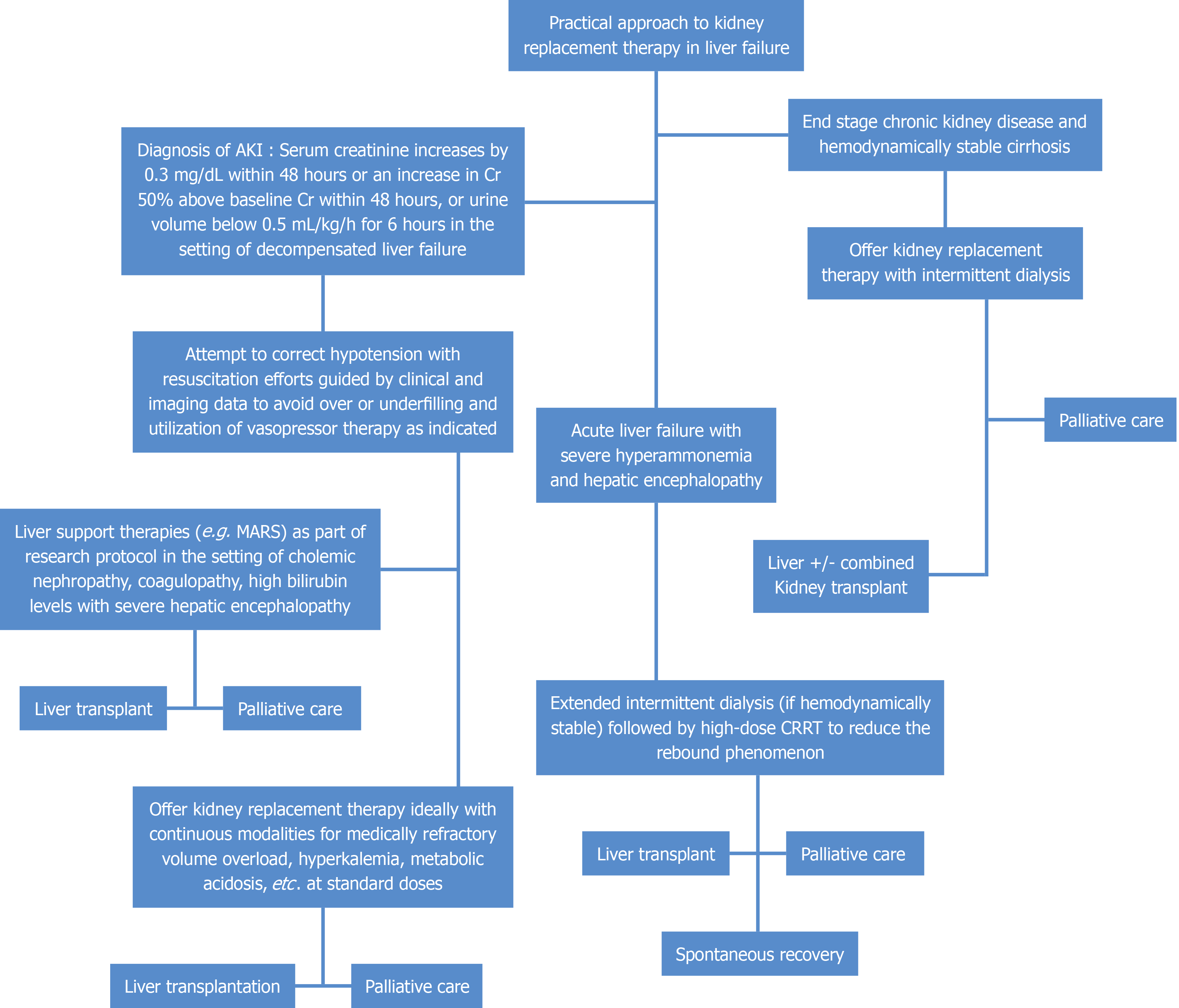Copyright
©The Author(s) 2025.
World J Crit Care Med. Sep 9, 2025; 14(3): 105235
Published online Sep 9, 2025. doi: 10.5492/wjccm.v14.i3.105235
Published online Sep 9, 2025. doi: 10.5492/wjccm.v14.i3.105235
Figure 1 Pathophysiologic pathways linking the liver, heart, and kidney in patients with advanced cirrhosis[25].
The orange circle depicts the conventional concept of hepatorenal syndrome, where renal dysfunction is mediated through splanchnic vasodilation and consequent neurohormonal activation. The green circle highlights the hepatocardiac pathways through which cirrhosis leads to cardiac dysfunction (i.e., cirrhotic cardiomyopathy). The yellow circle summarizes the bidirectional mechanisms linking cardiac dysfunction to aberrant renal function (i.e., cardiorenal syndrome). SNS: Sympathetic nervous system; AVP: Arginine vasopressin; GFR: Glomerular filtration rate; LVEDP: Left ventricular end-diastolic pressure. Citation: Kazory A, Ronco C. Hepatorenal Syndrome or Hepato
Figure 2 Practical approach to kidney replacement therapy in liver failure.
This figure depicts a practical approach to initiation of kidney replacement therapy in the setting of liver failure. CRRT: Continuous renal replacement therapy; MARS: Molecular adsorbent recycling system.
- Citation: Belal AA, Santos Jr AH, Koratala A, Kazory A. Expanding the boundaries of kidney replacement therapy in patients with liver failure. World J Crit Care Med 2025; 14(3): 105235
- URL: https://www.wjgnet.com/2220-3141/full/v14/i3/105235.htm
- DOI: https://dx.doi.org/10.5492/wjccm.v14.i3.105235














